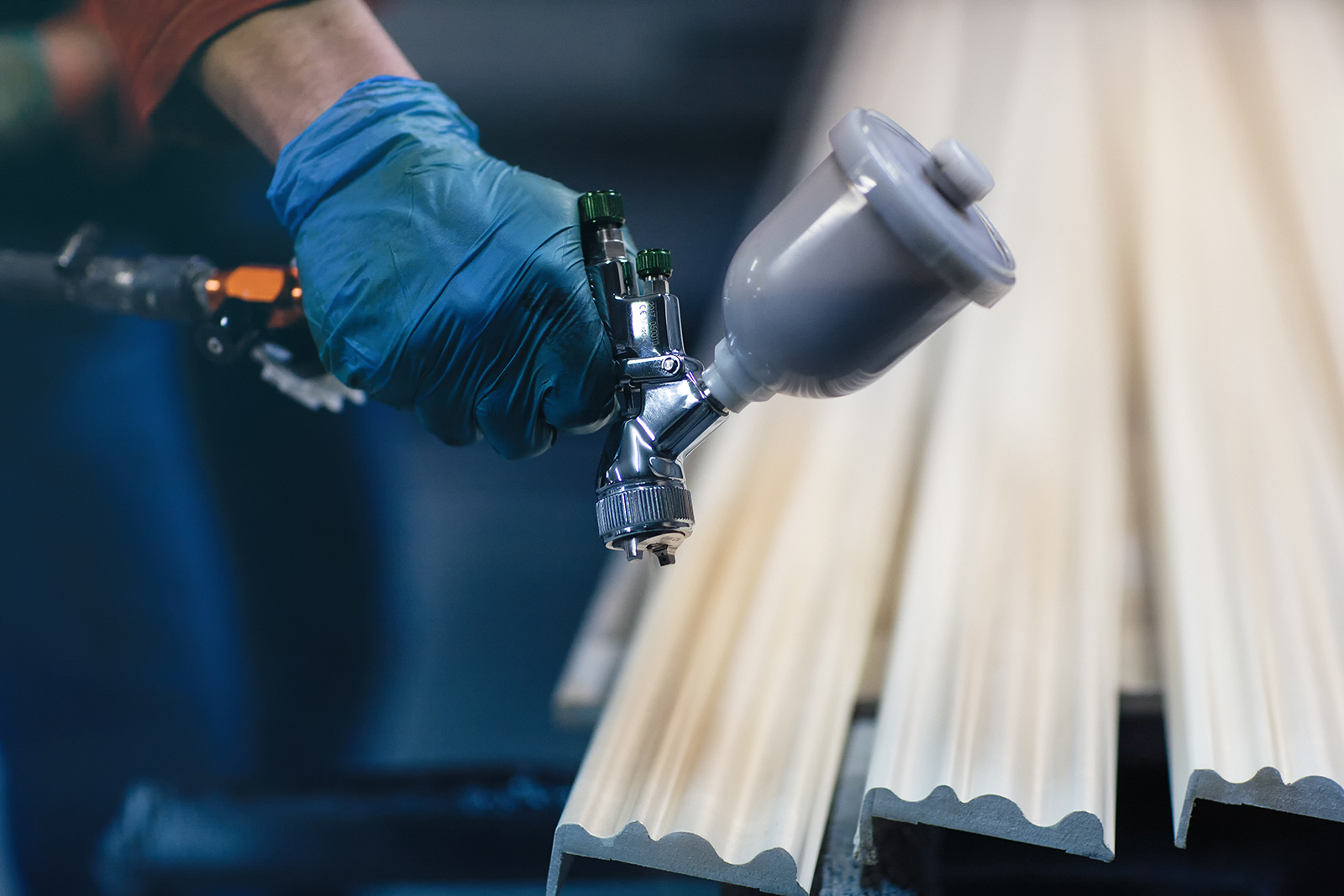Darrell Conger, CEO of CPR Construction, talks about dry rot in communities.
Subscribe: Apple Podcasts | Spotify | RSS
Read Transcript
[00:00:25.770] – Matthew Holbrook
Welcome to The Uncommon Area. I am Matthew Holbrook, and this episode is all about dry rot and HOAs. Here to talk to us about that is Darrell Conger with CPR. Appreciate you joining us again. We’ve done this before with another episode.
[00:00:43.210] – Matthew Holbrook
But we are talking today about dry rot. Probably not the favorite subject of anybody who might be watching this, but it is a reality of a lot of condominium HOAs in particular. I guess the first question, maybe to put you on the spot, what’s the definition of dry rot?
[00:01:06.930] – Darrell Conger
It’s bringing a little bit of science and biology. Basically, when you have a tree growing, it keeps growing and it’s all good until you remove the bark, and then that tree has no more protection. When they mill these trees and they rip all the bark off and they cut them, they need to be protected or they absorb moisture, and that’s why they rot out from the moisture getting in. They call it dry rot, but it’s really moisture rot. Then it dries out and then you’re left with this rotten wood.
[00:01:42.390] – Darrell Conger
Unlike hard woods, like oak and teak, those things, they’re very hard. They don’t absorb moisture the same way as pine and Doug fir. Most of the trim, and fascia, and all that kind of stuff, it’s all Doug fir and pine, and that’s soft wood. It absorbs water like crazy.
[00:02:03.320] – Matthew Holbrook
The bottom line is, is that from an avoiding dry rot standpoint, you want to keep that bark on the wood, or paint, or whatever-
[00:02:12.460] – Darrell Conger
Primer and paint.
[00:02:13.320] – Matthew Holbrook
-make sure that you’re protecting. The whole goal is to protect it from being affected by water.
[00:02:20.300] – Darrell Conger
Right. Unfortunately, that’s the first failure is back the construction requirements or specifications. ’70s, ’80s, ’90s, maybe even up to today, you have developers that don’t prime and paint the wood’s six sides. When they cut it and they miter it, they put those two pieces together at the corner and they’re raw. That’s where the dry rot comes from, is the water goes in.
[00:02:52.820] – Matthew Holbrook
Painting six sides is a start, priming six sides-
[00:02:55.750] – Darrell Conger
Priming and painting six sides and then installing the wood.
[00:02:59.690] – Matthew Holbrook
Just to get really basic on this, and this is for managers, and board members, and people who may not have any exposure to this, why do you have to prime it and paint it? Why doesn’t paint just cover it and do the job?
[00:03:15.600] – Darrell Conger
Sure. Well, primer has a lot of additives in it and bonders that actually stick and bond to the wood. Whereas paint is basically just latex mixed with water and some other ingredients that help that latex layout in a layer, and that’s why you can peel it off in just a long piece of latex, and it’s very flexible. It doesn’t have all the additives that primer does.
[00:03:46.510] – Matthew Holbrook
If wood has been primed and painted, and then you get to that stage where the paint starts peeling off, does that-
[00:03:54.790] – Darrell Conger
That’s too late.
[00:03:56.230] – Matthew Holbrook
Let me ask about that. That’s more than an aesthetic issue. If the paint is peeling off, the primer is still there. What’s the problem with that?
[00:04:04.780] – Darrell Conger
Because primer is not latex. It’s the opposite. It still has some of those properties, but it is going to allow the water and the moisture through into the wood. Whereas the latex coating of the paint keeps the moisture on the outside. When you see it, if paint is failing, it’s already too late. You’ve waited too long.
[00:04:30.850] – Darrell Conger
Usually, every 3-4 years is wood. If you don’t do it… I was recently in an association that’s only 10 years old, and it had a massive… Oh, man, it had $10,000 beam that had never been maintained in 10 years, and it already had dry rot and had to be replaced after 10 years.
[00:04:53.990] – Matthew Holbrook
Now on the other hand, if they would have been priming and painting that beam every other year—let’s just be ultra aggressive about it—would it last forever?
[00:05:06.730] – Darrell Conger
Yeah, absolutely. Technically. Well, it actually doesn’t need to be primed after the initial priming stage, it’s just paint. You just clean it and paint it. If you maintain that and you keep the water from getting into the wood, absolutely. It’s all about maintenance.
[00:05:23.000] – Matthew Holbrook
I guess the point I’m trying to drive at through my questions and you’re making is, you’re a whole lot better off staying on top of the painting, even if it means you’re painting more frequently, even than you necessarily should, as opposed to having to deal with the dry rot, where you’re actually replacing beams, and wood, and fascia, and so forth.
[00:05:41.570] – Darrell Conger
Yes. The trellis that that beam was on would probably cost $5,000 to paint every four years, and that one beam had to be replaced, and it could have painted that thing for four years or four times.
[00:05:58.440] – Matthew Holbrook
Right.
[00:05:59.240] – Darrell Conger
It’s deferred maintenance when it comes to painting, and the painting contractors are all going to love me for this—absolutely a mistake. It’s more important to keep that paint on the wood, on the metal. Even the stucco, even though it’s just masonry, 7-10 years, paint it. When they defer maintenance on stucco, even stucco will fail because the final coat breaks free from the undercoat and it starts to shed off, and then you have to restucco. Maintenance is upkeep is very important. Yes.
[00:06:39.590] – Matthew Holbrook
With the dry rot, what’s the first indications that you have a dry rot issue?
[00:06:46.150] – Darrell Conger
Well, usually dry rot also… The termites in Southern California are pretty aggressive in the swarm. A lot of dry rot will end up having termites in it as well. You’ll have the cut pieces, and the joints, and the miters is where you first see it, and then it spreads from there.
[00:07:08.710] – Darrell Conger
If you see it, then it’s too late. It’s already well into the wood, and you’re going to end up replacing a big piece. When they’re painting, if they see it, when they’re power washing or they poke it and they see that there’s some soft spots, then maybe you can treat it, and the termite company could treat it, and stop the termites, and do a little bit more on the paint side, and try to protect that miter.
[00:07:37.630] – Matthew Holbrook
When you’re in a situation where you do have to make replacements, it’s already too late, you’ve got dry rot, maybe termite damage. You treated the termites, now you have to make repairs or replacement of the wood. Are you better off, I guess, just strategically, as an association, to wait and do a whole bunch of that all at once as one big project, or are you better off to do it on a piecemeal basis as it comes up and do it a little bit at a time?
[00:08:12.110] – Darrell Conger
Depending at what stage. If it’s been deferred maintenance for 20 years, you’re going to have a lot of repairs that need to be done. A normal way to address it, a lot of contractors will come in and they’ll just bid a scope or a matrix that somebody else put together. They’ll just stick to that and they’ll just do what I call blow-in, blow-up, and blow-out. They’ll leave a bunch of stuff behind that didn’t get caught in that go round. Then five years later, they got to come back and do it again.
[00:08:49.530] – Darrell Conger
The other way that we figured out 15 years ago is to come in and do one or two buildings that are really bad, and just get everything on those buildings, and give the board a budget number, an idea based on a reduced hourly rate maintenance contract. If the board says, “Okay, you know what? We can do that. We can budget that over the next year and do it out of our general fund or maintenance and not have to take a loan or do anything crazy.”
[00:09:25.410] – Darrell Conger
Yeah, it takes a year, but you get the wood done, and then they come in and paint behind it, and they’re done. Then if they maintain the paint, we never come back.
[00:09:34.540] – Darrell Conger
I’d encourage board members to look into that if it’s really chronic. If it’s a newer association, 10 years old, and it’s not that bad, then a lot of times, contractors will work with painters, and they can come in and do the repairs as the painters find it. It’s much easier that way.
[00:09:52.330] – Matthew Holbrook
In that case, you have two different contractors going at once, and they just coordinate together.
[00:09:56.060] – Darrell Conger
Yeah. Or a lot of painters are contractors now. There are several contractors out there that have paint divisions, and they work together.
[00:10:04.590] – Matthew Holbrook
Moral of the story, though, is stay on top of the maintenance on the painting. Avoid that situation altogether, if at all possible.
[00:10:11.580] – Darrell Conger
Absolutely.
[00:10:12.370] – Matthew Holbrook
That’s bad for your business, though.
[00:10:13.960] – Darrell Conger
It is. But if there’s one thing I’ve learned in 24 years of doing this HOA work is very few people listen. They won’t take my advice. Sorry.
[00:10:26.160] – Matthew Holbrook
But stay on top of the painting, stay on top of the maintenance, and you’ll avoid the big ticket items in the long run, which is not only costly, but disruptive to the homeowners.
[00:10:36.450] – Darrell Conger
Way more disruptive than the painting. Painting is usually very quick and you’re off the building. Come in and do a wood repair. She could be on the building for weeks.
[00:10:45.560] – Matthew Holbrook
Right. Anything else that I should be asking about related to dry rot?
[00:10:51.210] – Darrell Conger
Not that I can think of.
[00:10:52.520] – Matthew Holbrook
All right. Well, I hope that was helpful. This is an issue that comes up for lots and lots of associations, so keep watching for additional episodes.





